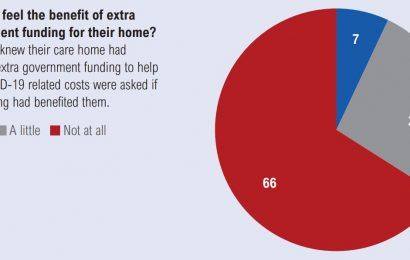If you’ve been worried about air quality in your home, you’re not alone. Research has shown that almost three quarters of Americans (74%) have been anxious about air quality and pollution. With wildfires continuing to plague many areas of the United States and Europe, it would seem those concerns are only going to deepen.
According to the United States Environmental Protection Agency (EPA), Americans spend 90% of their time indoors on average. People with respiratory or cardiovascular disease, who are more susceptible to the effects of pollution and poor air quality, spend even more time indoors.
The EPA points out that some indoor pollutants have increased in concentration in recent decades. From energy-efficient building measures that curb ventilation to the increased use of household cleaners, we’re all more at risk from poor air quality in our homes.
With this in mind, knowing how to measure your home’s air quality index, and getting to grips with what those measurements mean, is crucial to improving the air quality in your own home. This article will help you through those first steps to understanding air quality index and ensuring it remains at healthy levels in your house or apartment.
What does the air quality index mean?
Knowing what the air quality index is for your local area is the first step to understanding and controlling indoor air quality in your home. Multiple studies have found that outdoor pollutants, such as diesel fumes, pesticides, and even fungal spores, can leak into indoor spaces in three major ways:
- Air conditioning units or fans which pull air indoors from outside (mechanical ventilation)
- Open windows and doors (natural ventilation)
- Air exchange through cracks and leaks in building exteriors (infiltration)
The U.S Air Quality Index (AQI) is a daily index that measures the air quality in your local area. Using six color-coded categories, the AQI makes it easy to quickly determine the level of risk in your area from air pollution. It measures five major air pollutants:
- Ground-level Ozone
- Particle Pollution
- Carbon monoxide
- Sulfur monoxide
- Nitrogen monoxide
According to the EPA, high outdoor particle pollution can directly affect and elevate indoor particle pollution concentrations, as their small size means they can easily penetrate into homes and buildings from outside.
What is a normal air quality index?
According to AirNow, an air quality index of 100 or lower is considered satisfactory or acceptable. Anything higher than 100 indicates that air quality is unhealthy. This index value initially affects at-risk groups and includes more people as the index value rises. Anything above 301 is considered hazardous to everyone’s health, regardless of existing health conditions or age.
How to measure the air quality index at home
The easiest way to measure the air quality index in your home is to purchase a reliable indoor air quality monitor (IAQ). IAQs can identify and measure a wide variety of pollutants in the home, including particulate and gaseous pollutants, but this will depend on which model you purchase.
The EPA is currently working with manufacturers to improve the quality of IAQs used in the home. In the meantime, it warns that some IAQs can be adversely affected by temperature, humidity and may become less sensitive to certain pollutants over time. So, you may only have a shelf life of one to two years with some models.
Depending on the IAQ you purchase, your device may alert you to unsafe air quality by flashing an indicator light or emitting a sound. Smart devices may send push notifications to your smartphone or tablet. Some IAQs also provide outdoor air quality levels, so you can compare and track both readings. This may help you to identify whether you have a problem indoors that’s affecting air quality, such as pets, pests, or mold, or whether it’s outside conditions that are making your indoor air quality poorer.
Which cities have the ‘cleanest’ air in the US?
The American Lung Association produces an annual air quality report called ‘State of the Air’ using the most recent air quality data released by the EPA on ozone and particle pollution. It uses this data to highlight and rank cities and countries based on their scores for:
- Ozone
- Year-round particle pollution
- Short-term particle pollution
State of the Air 2021 looks at data from 2017, 2018, and 2019. It ranks the following cities in its top 25 cleanest U.S. cities for year-round particle pollution:
The report also highlights the best U.S. cities for ozone air pollution and short-term particle pollution. However, because lots of cities achieved the same result, these are not ranked in any order You can see a full list of results by heading to the Lung.org website.
Joanne Lewsley
Joanne Lewsley is a UK-based freelance writer and editor, covering health and lifestyle news and features. She creates evidence-based health and parenting content and has worked with some of the world’s best-known brands and websites, including BabyCentre UK and Medical News Today.
Source: Read Full Article



